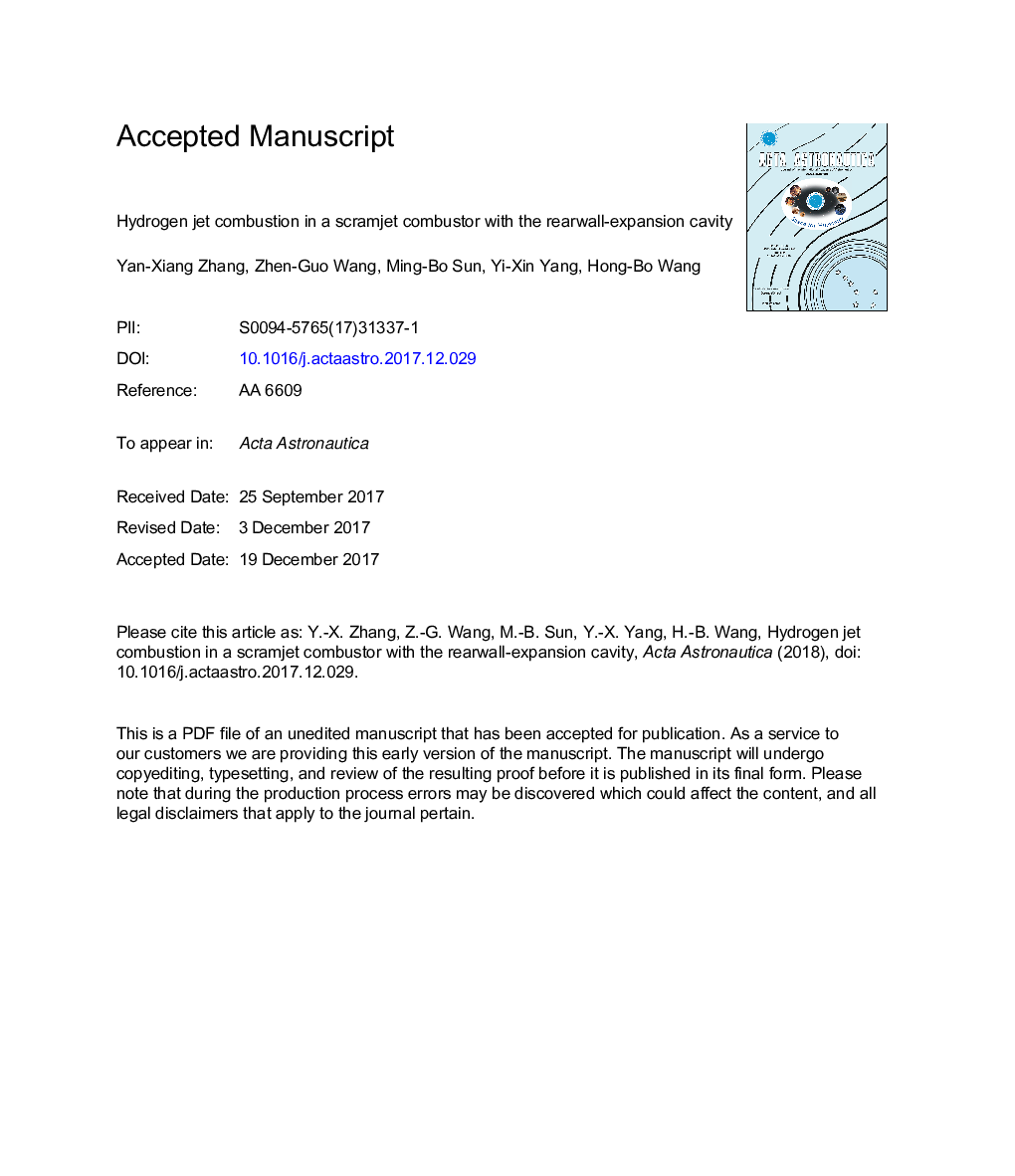| Article ID | Journal | Published Year | Pages | File Type |
|---|---|---|---|---|
| 8055707 | Acta Astronautica | 2018 | 28 Pages |
Abstract
This study is carried out to experimentally investigate the combustion characteristics of the hydrogen jet flame stabilized by the rearwall-expansion cavity in a model scramjet combustor. The flame distributions are characterized by the OH* spontaneous emission images, and the dynamic features of the flames are studied through the high speed framing of the flame luminosity. The combustion modes are further analyzed based on the visual flame structure and wall pressure distributions. Under the present conditions, the combustion based on the rearwall-expansion cavity appears in two distinguished modes - the typical cavity shear-layer stabilized combustion mode and the lifted-shear-layer stabilized combustion mode. In contrast with the shear-layer stabilized mode, the latter holds stronger flame. The transition from shear-layer stabilized combustion mode to lifted-shear-layer stabilized mode usually occurs when the equivalence ratio is high enough. While the increases of the offset ratio and upstream injection distance both lead to weaker jet-cavity interactions, cause longer ignition delay, and thus delay the mode transition. The results reveal that the rearwall-expansion cavity with an appropriate offset ratio should be helpful in delaying mode transition and preventing thermal choke, and meanwhile just brings minor negative impact on the combustion stability and efficiency.
Related Topics
Physical Sciences and Engineering
Engineering
Aerospace Engineering
Authors
Yan-Xiang Zhang, Zhen-Guo Wang, Ming-Bo Sun, Yi-Xin Yang, Hong-Bo Wang,
